10 special notes when driving on slippery roads
(Baonghean.vn) - For inexperienced drivers, driving a car on slippery roads is not simple; especially on steep and slippery dirt roads.
1. Check your tires before you hit the road
To reduce the risk of skidding, check your tires regularly. The faster you go, the more the water pressure lifts your car, and it slides on a thin layer of water between the tire and the road.
Therefore, to maintain better contact with the road surface and tire, you should always keep the tire pressure at the right level, keep the tire tread in good condition and replace the tire when necessary. In particular, do not try to drive when the tire is worn past the tire wear line.
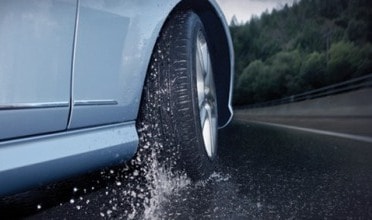 |
2. Ensure good visibility
Drivers' visibility is often limited when it rains, so the front windshield and rearview mirrors are the parts that need to be clean. For the windshield, not only the outside but also the inside must be clean, free of condensation. Therefore, check and replace the wipers regularly to ensure visibility when it rains.
3. Check the lighting system
Other drivers need to see you as much as you need to see them, so you should turn on your lights even in light rain. If you have daytime running lights, you should also turn them on so that drivers behind you can see you better. So check to make sure your headlights, taillights, brake lights and turn signals are working properly. Clean the surface of the lights before each trip to ensure maximum brightness.
4. Avoid taking shortcuts
In harsh weather conditions, you should choose routes with many vehicles participating, because it will be safer. Absolutely, you should not take shortcuts, especially village roads and dirt roads because rainwater makes the road very slippery, easy to slide, not to mention potholes, bumps, very difficult to move.
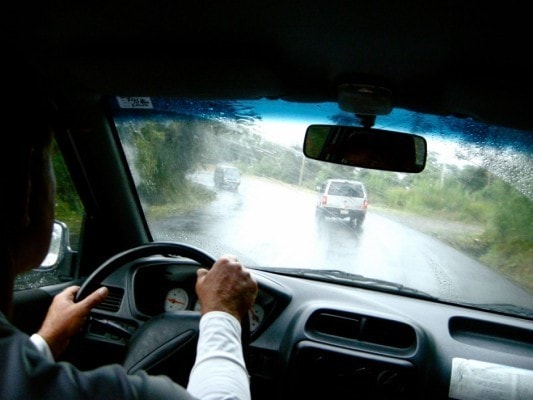 |
5. Slow down and keep your distance.
When it rains, the road is often slippery, so braking efficiency is also reduced. Visibility is also limited. This is the reason why accidents happen if drivers are careless or go too fast.
Drivers should reduce speed by at least 20% even when driving on familiar roads when the road is slippery. For unfamiliar roads or when going through intersections, entering curves… reduce speed as much as possible to observe all sides.
You should stay on your side of the road to avoid slippery roads, the car can swing its tail into the opposite lane when the car changes direction.
The safe distance between vehicles when driving in slippery road conditions is 30m (40% increase compared to normal conditions). Note, the higher the chassis of the vehicle, the more likely it is to roll over, so you should be as careful as possible.
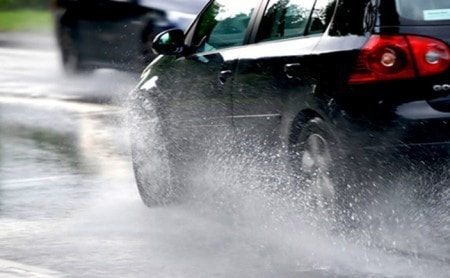 |
6. Avoid wheel slippage
For vehicles equipped with anti-lock braking systems (ABS), the driver should press and hold the brake pedal firmly, while trying to avoid the vehicle in front. The ABS system will help the vehicle slow down quickly and regain control. Do not slam on the brakes as this will reduce the effectiveness of the ABS system.
For vehicles without ABS, apply the brakes firmly without locking the wheels. Try to keep your heel on the floor and use the ball of your foot to apply the brakes firmly and steadily.
7. Brake only when absolutely necessary
A safe driving experience when entering slippery roads that needs to be followed is to only brake when really necessary, avoid making sudden movements such as braking, accelerating or steering... because it is very easy to cause the car to skid and lose direction. To do this, you must always concentrate on driving, know how to judge the situation and make gentle, flexible movements.
Keep a suitable distance from the car in front. Drive so that you can stop without having to brake, because braking on slippery roads will not help you much.
If you are on a steep slope, you should slow down before going downhill and maintain a low speed.
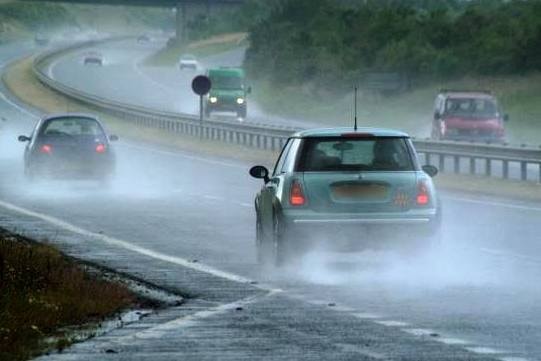 |
8. Do not steer hard
When losing control of the car, the natural reaction of many people is to continue steering, but this is a mistake because it does not bring any results, often makes the situation worse. At this time, you need to calmly hold the steering wheel, release the accelerator, and apply the brakes until the car stops safely.
If you do slip, vehicles without automatic brake locking should avoid using the brakes; vehicles with ABS should brake firmly when going through the slip. At the same time, gently release the accelerator, carefully turn the steering wheel in the direction you want the front of the car to go until the front of the car moves straight.
9. Follow the tire tracks of the vehicle in front.
When driving on slippery, muddy roads, the wisest way is to follow a vehicle in front and drive in the tire tracks of that vehicle, because the tire tracks of the vehicle in front have cleared the way for your vehicle, reducing the adhesion between rainwater and dirt on the road surface, making it less slippery.
In addition, you should turn on your low beam or fog lights (even when it's raining lightly) so that the light helps you see the road more clearly and makes it easier for other vehicles to see your vehicle.
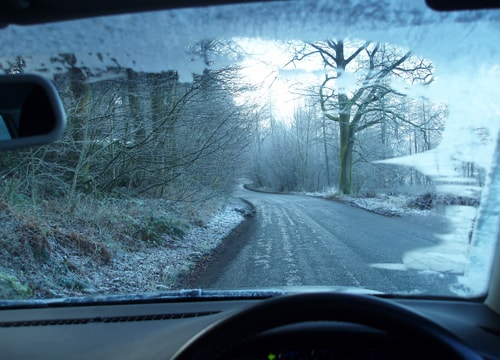 |
10. Use air conditioning
To avoid condensation of water vapor in the cabin and fogging up the car windows, turn on the air conditioner and select outside air intake mode./.
Ngoc Anh
(Synthetic)
| RELATED NEWS |
|---|
